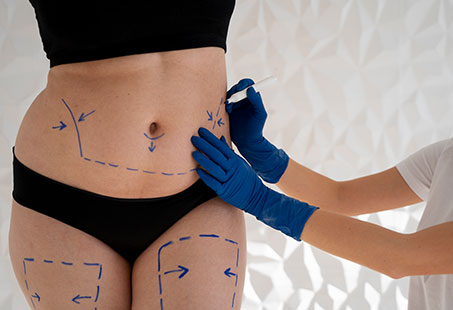Laser liposuction or laser-assisted liposuction is a type of cosmetic surgery that uses different wavelengths of laser to get rid of small fat pockets.
In addition to melting the fat cells within the body, it also tightens the skin by stimulating the production of new collagen.
It’s a surgical procedure, although it’s less invasive than traditional liposuction. However, some clinics also use the term “laser liposuction” to market non-surgical fat removal machines. This can sometimes confuse patients between these treatments (that give different results).
Also of note is that although laser liposuction is another type of liposuction, it’s still debated whether it’s any better than traditional liposuction. This is important because laser lipo can be more expensive.
What Is Laser Liposuction?
Laser liposuction combines laser lipolysis with liposuction to remove localised pockets of fat from the following areas in the body:
- Cheeks
- Chin
- Neck
- Arms
- Abdomen
- Hips
- Thighs
- Knees
- Ankles
The idea to use a laser for removing fat from the body was first introduced in 1992 by Apfelberg. However, at that time, the fat was only broken down (laser lipolysis). It wasn’t suctioned out of the body.
Eventually, in 1994, Apfelberg, with his colleagues, used a YAG laser fibre to perform laser-assisted liposuction. Using a cannula, they removed the broken-down fat cells from the body.
Since then, many devices have been introduced (including those approved by the FDA) for performing laser-assisted liposuction.
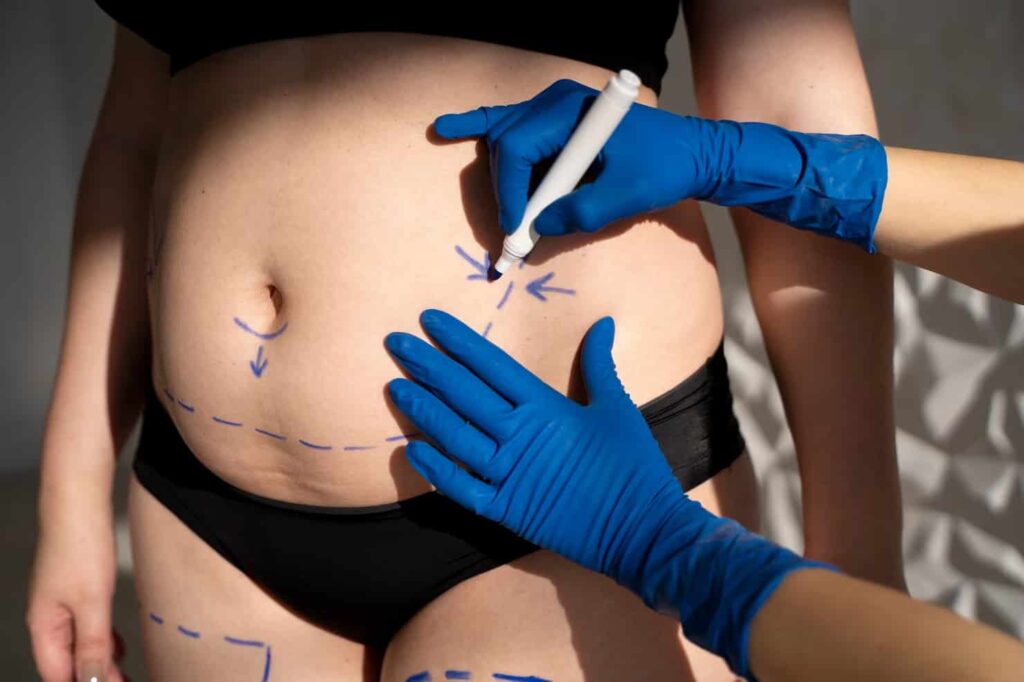
A popular example is SmartLipo, which comes with three different wavelengths (1,064nm, 1,320nm and 1,440nm) to contour the body through fat removal and skin tightening. It essentially heats up and melts the fat, making its removal easier.
Keep in mind that laser-assisted liposuction is different from just laser lipolysis. The latter usually refers to non-surgical treatments for fat removal that can require multiple sessions. Strawberry laser machine and Zerona are just a few examples of it.
Who’s A Suitable Candidate For Laser Liposuction?
You’re a good candidate for laser liposuction if:
- You are in good health.
- You have localised pockets of fat (resistant to diet and/or exercise).
- You have achieved your ideal body weight (BMI less than 30).
- You have good skin elasticity.
Some people also want to know if laser liposuction can help with cellulite reduction.
Although this surgery is not aimed at removing cellulite, according to a study published in the Journal of Clinical and Aesthetic Dermatology, some surgeons do note an improvement in cellulite appearance after laser lipolysis.
According to the American Academy of Dermatology, “it’s too early to tell” if laser-assisted liposuction works for cellulite. But it’s possible that the laser may help.
Another important thing to keep in mind is that laser-assisted liposuction is not for weight loss. It only contours the body, so you need to have realistic expectations.
What Does Laser Liposuction Cost?
In the UK, laser liposuction can cost anywhere from £3,000 to £6,000 per treatment area.
However, the prices can vary depending on the location of the clinic, your surgeon’s experience, the number of treatment areas and the type of anaesthesia.
The consultation may or may not be free. You should also expect to pay more for post-operative medication and follow-up appointments.
How Does Laser Liposuction Work?
For your laser liposuction, your doctor will administer general or local anaesthesia (with sedation). Although, usually, it’s local, and you’ll be awake.
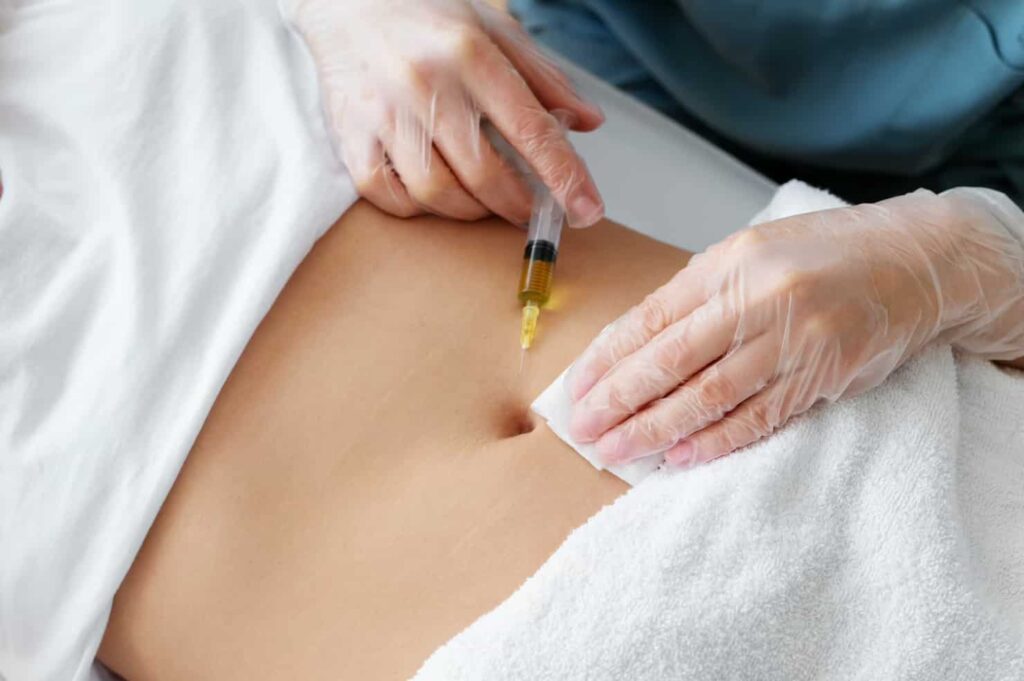
Once it takes effect, your surgeon will make a small incision and insert a laser fibre into your target area. The heat of the laser melts the fat, and the cannula also mechanically disrupts the fat. This is then removed from the body using a cannula.
Meanwhile, during the procedure, the heat from the laser diode also breaks down the collagen and stimulates what’s known as “neocollagenesis” (new collagen production which tightens the skin). This doesn’t happen instantly but over time (several months).
Here, it should also be noted that the laser diode wavelength can vary depending on your treatment goal. Your surgeon may even use a combination of them.
For instance, according to a review published in Dermatologic Surgery, the three most tested wavelengths for laser lipolysis are 1,064-nm Nd: YAG, 980-nm diode, and the 1,064-/1,320-nm Nd: YAG lasers.
The 980nm one can be more useful if your target area is large. The 1,064nm one has a longer history of safety. The combination laser shows better results in tightening skin and producing collagen.
In any case, the primary action of laser-assisted liposuction is driven by the heat generated by the laser diode.
The entire procedure of laser liposuction takes around 1 hour (for one area). However, it can take longer, depending on the size and number of treatment areas.
What Is Laser Liposuction Before And After?
You can get an idea of the results of laser liposuction by looking at the following:
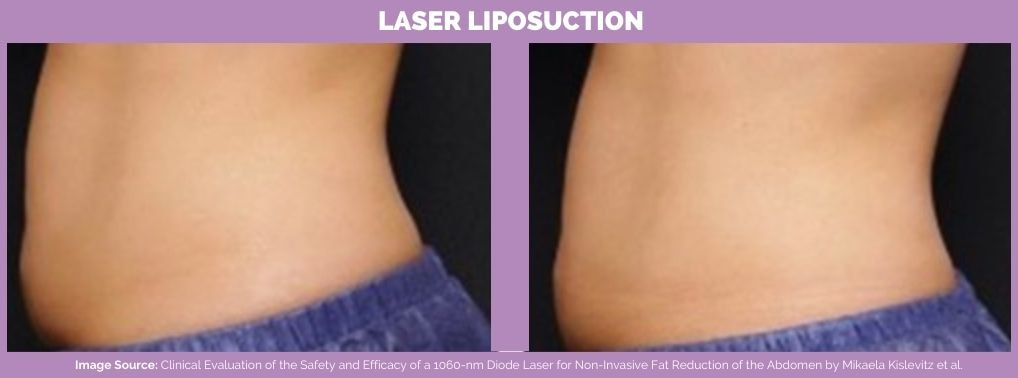
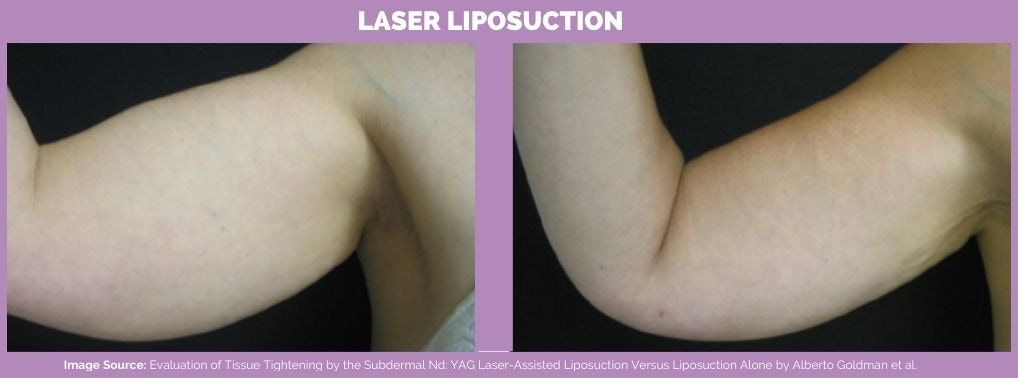
While you’ll notice a change in your body contour right after the procedure, the final results can take some time to show.
Before that, you can experience:
- Bruising
- Soreness
- Swelling
- Bleeding
- Numbness
- Pain
- Discomfort
You’ll probably have to wear a compression garment for a couple of weeks. But you can get back to work after 2-3 days (consult your doctor first, as it can depend on the extent of the surgery).
You may notice skin tightening for up to 6 months. By that time, your swelling should have also subsided so you can see your final results.
Is Laser Liposuction Permanent?
The results of laser liposuction are permanent because the procedure breaks down and removes the fat cells from the body.
You’ll continue to see the results of your procedure for as long as you maintain a stable weight.
What Is The Disadvantage Of Laser Liposuction?
Some of the disadvantages of laser liposuction are as follows:
- Limited skin tightening – you shouldn’t expect laser liposuction to dramatically tighten your skin. You already need to have good skin elasticity. If that’s not the case, you’ll end up with loose skin. A tummy tuck or lifting procedure will be better in this instance.
- Risk of thermal injury – Because it uses heat, there’s a risk of thermal injury to your skin with laser-assisted lipo.
- Doesn’t sculpt the body – Compared to laser liposuction, you can achieve a much more sculpted body shape with Vaser liposuction.
- More expensive – Because the devices for laser lipolysis can be quite expensive, the treatment costs for laser lipo can also be higher.
No fat grafting – Fat grafting is not an option with laser liposuction because the fat is melted. So, you can’t transfer your unwanted fat to your butt (BBL) or boobs.
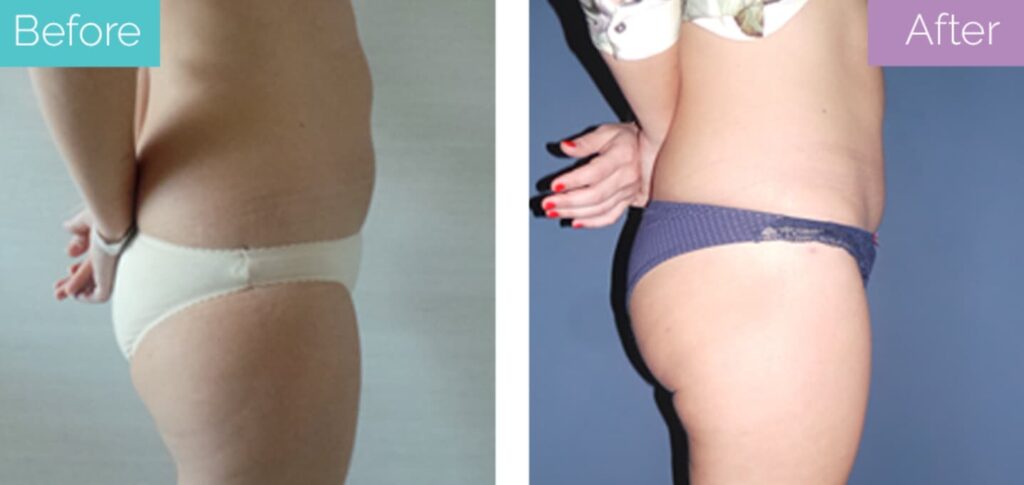
And even though laser liposuction is less invasive than traditional liposuction, it’s not risk-free.
Like all surgical procedures, it also carries certain risks, which can include burns, contour irregularities, infection, necrosis, and seroma, among others.
Is Laser Liposuction As Effective As Traditional Liposuction?
It’s not widely accepted that laser liposuction is generally better than traditional liposuction.
A systematic review published in Aesthetic Plastic Surgery concluded that studies promoting laser-assisted liposuction for better fat removal, skin tightening and overall satisfaction have a high bias. As a result, their conclusions aren’t as reliable.
Some say that recovery is quicker with laser liposuction because it’s less invasive and traumatic. However, there are others who argue that the heat causes even more trauma than the cannula in traditional liposuction.
But less bleeding has been reported in the case of laser lipo. And that’s because this procedure coagulates the blood vessels.
Therefore, it’s possible that you might do just as well with traditional liposuction. But in any case, you can minimise the risk of complications by choosing a surgeon who’s board-certified and experienced.
Conclusion
Laser liposuction has become quite popular for being less invasive than traditional liposuction. Its skin-tightening effect also gives it an edge over the latter.
However, whether or not this type of liposuction is actually better than suction-assisted liposuction is still a matter of debate. Some say that it’s better, while others say that laser is not superior to the classic technique.
The type of liposuction that will best meet your needs can vary depending on your desired results. So, if you’re looking to get rid of stubborn pockets of fat anywhere in your body, make sure to get in touch with a qualified and experienced plastic surgeon.
Reviewed and approved by Prof Dr Fuat Yuksel
FAQ
Does laser liposuction actually work?
Laser-assisted liposuction can effectively remove unwanted fat from different areas of your body. It can also modestly tighten your skin.
Does laser liposuction hurt?
Laser liposuction is performed under anaesthesia (local or general) so you won’t feel any pain. However, your treatment can hurt for a few days after the procedure. Doctors usually prescribe painkillers for this.
Is laser liposuction safe?
Provided you choose an experienced and board-certified plastic surgeon, laser liposuction should be safe. But it’s still not without risks.
How much weight can you lose with laser liposuction?
With laser liposuction, a maximum of 5 litres of fat can be removed, which is around 10 pounds or 4.5 kg. But keep in mind that laser liposuction is not for losing weight.
